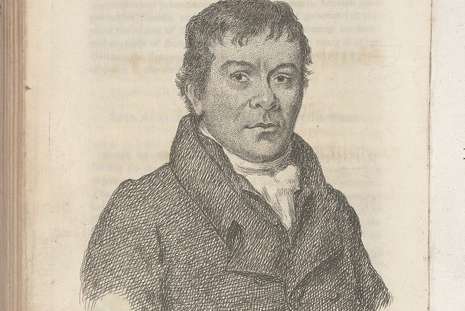In pictures
The 1833 Abolition of Slavery Act and compensation claims
In August 1833, Parliament passed An Act for the Abolition of Slavery throughout the British Colonies, converting enslaved people into apprentice labourers and taking steps to protect their work and wellbeing. These papers show the complaints of some estate owners over the compensation process.
Important information
Please note this page highlights documents that discuss enslavement as a trade and as a condition, focusing on compensation for estate owners and investors, not on the liberated people. They are presented here to accurately represent our records and to help us understand the past. Care is advised when engaging with archival materials on the history of the slave trade as they can cause an emotional reaction.
The published Act for the Abolition of Slavery throughout the British Colonies

- Date
- 28 August 1833
- Catalogue reference
- PC 1/4444
The 1833 Act outlawed British trade in enslaved people. It stated that 'all such persons should be manumitted [freed by their enslaver] and set free and that a reasonable Compensation should be made available to the Persons hitherto entitled to the Services of such Slaves’.
After a long struggle for emancipation, the Act made apprentice labourers of those aged over six who had been enslaved. These apprentices were to work without compensation as a transition to freedom. They remained tied to estates, but could buy release from this even against the will of their employer.
The Act also set out some rights. Formerly enslaved people could not be removed from a colony, families could not be separated, and employers were to supply food, clothing, lodging and medicine.
The period of apprenticeship ended in 1838, after which full emancipation was granted to all throughout the British Colonies.
Forms for slave owners to claim compensation

- Date
- 1835–6
- Catalogue reference
- PC 1/4444
When the Act came into effect on 1 August 1834, owners had to complete forms recording the numbers and value of enslaved people in their possession to claim compensation. Many of our records relating to slave ownership, often done discreetly, come from this compensation scheme.
Sample forms were included with the Rules for Compensation Commissioners. The claims categorised enslaved people by their work – primarily agricultural on the estates of their owners, non-agricultural and on lands not belonging to their owner, and those outside the other categories, such as household workers.
Different sums of compensation were assigned based on the type of duties and skills within those categories, and the estimated cash value of the individual. This was a process to secure money from the government, so the difference between what was stated in claims and the reality on estates may have been huge.
Registers of compensation payments to slave owners

- Date
- 1835–6
- Catalogue reference
- NDO 4/1
Returned claim forms to the Commissioners and earlier registrations of slaves owned under the 1807 Abolition of the Slave Trade Act are kept at The National Archives in record series T 71 and AO 14.
Compensation paid was entered on registers created by the National Debt Office, kept in series NDO 4. This example, for the Jamaican estate of Westmoreland, shows the signatures of agents, the names of claimants, the dates of treasury warrants and the value of payments. This material was used as the basis for the Legacies of British Slavery resource at University College, London.
The ways in which these debts were calculated and transferred to different government bonds and funds meant that the residue of these slavery payments was not cleared until 2015.
Slave owners’ complaints about the compensation process

- Date
- 13 October 1834
- Catalogue reference
- PC 1/4444
A month before the Act had even passed, John Peterson, President of the governing council of St Vincent, complained about the compensation offered to slave owners. He wrote that it would be inadequate to cover estates held under mortgage, or for the future costs of owners as employers of labourers.
One complaint asked, ’is it just that the unfortunate proprietor should be the only sufferer’ in the compensation process. This indicates the dominant concern among slave owners that emancipation would have a deep economic effect on income in the West Indies, and reduce investment from Britain.
An agent for the legislatures of the nineteen colonies included in the Act, John Colquhoun, tried to persuade the government to change the rules. He was referred only to the Privy Council’s appeal process by Secretary of the Colonies Edward Smith-Stanley, 14th Earl of Derby, and his deputy, John Lefevre.
Featured article
The story of
Robert Wedderburn

Robert Wedderburn (1762–1835) was a British-Jamaican radical preacher, abolitionist and writer.